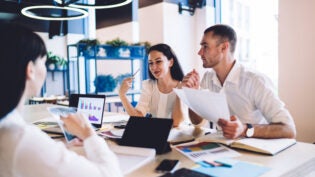
The barbell effect is a concept in marketing and business strategy that describes how markets can become polarized, with a decline in the middle market and growth at both the high and low ends. Think of a barbell at the gym: there’s weight at both ends and a thinner bar in the middle. In a market, this means that businesses catering to premium, high-end customers and those catering to budget-conscious customers both thrive, while mid-market businesses struggle.
How It Works:
- High-End (Premium Market): Businesses at this end offer high-quality, premium products or services at a higher price point. These appeal to customers who are willing to pay more for exclusivity, superior quality, or brand prestige. Good examples are Louis Vuitton and Gucci. These brands attract affluent customers willing to pay a premium for luxury goods.
- Low-End (Budget Market): On the other end, businesses offer affordable, no-frills products or services. These appeal to price-sensitive customers looking for value. Examples would be Dollar General and Walmart, who cater to the budget-conscious consumer, offering affordable products at scale.
- Middle Market Struggles: The middle segment, which offers products or services that are neither the cheapest nor the most premium, often loses out as customers gravitate towards either the high or low end. This can be due to the perception that mid-range products offer neither the value of low-end options nor the quality or prestige of high-end ones. Traditional mid-market department stores like Sears and JCPenney have struggled because they lack the exclusivity of luxury brands and the affordability of discount retailers.
Which Businesses Does It Apply To?
The barbell effect is most applicable to industries where there is significant consumer choice and where market polarization has occurred. Here are a few examples:
- Retail: Luxury brands and discount retailers are thriving, while mid-range department stores may struggle.
- Food & Beverage: High-end restaurants and fast-food chains both perform well, while casual dining chains face more competition.
- Technology: Premium tech products (e.g., Apple) and budget devices (e.g., no-name brands) both succeed, but mid-tier products can get squeezed.
Questions to Inform Your Understanding:
- What is your target market? Are your customers more likely to seek premium, high-quality products, or are they looking for budget-friendly options?
- What differentiates your product/service? How does your offering stand out from both low-end and high-end competitors? Do you emphasize quality, price, or another factor?
- How does your pricing strategy align with customer expectations? Are you trying to compete on price, quality, or somewhere in the middle? How is your pricing perceived by your customers?
- What trends do you see in your industry? Are more consumers shifting toward premium products, budget-friendly options, or something else? How does this trend impact your business?
- How do you handle competition? Are you competing more with high-end businesses or low-end ones? How do you position yourself against them?
Understanding the barbell effect can help you decide where to position your business to maximize success, especially if you’re a small business trying to find your niche in a competitive market.
1758 Views











